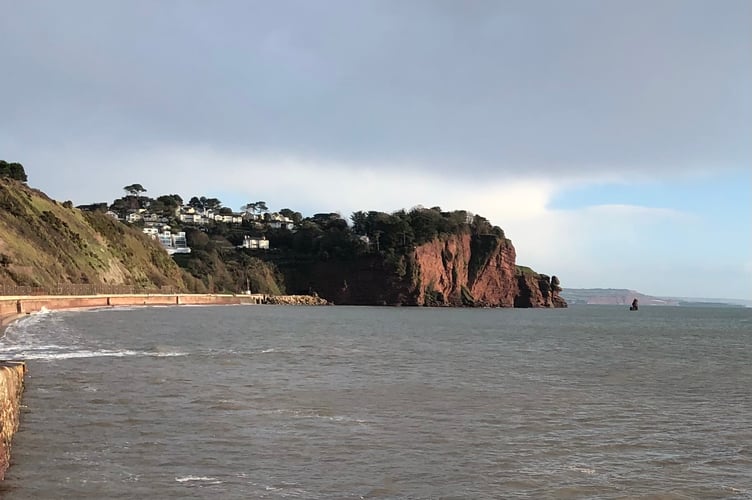Network Rail is pressing on with plans to shore up the cliffs above the railway line outside Teignmouth despite the government halting the project last summer.
Work on a ‘dewatering trial’ to stabilise the cliffs between Parson’s Tunnel and Teignmouth will start in the next few weeks.
The trial, which is due to run until April 2026, will test a mechanism for pumping water out of the cliffs to assess if it will help to prevent landslips.
Two new wells, one 60 metres deep and one 30 metres deep, will be dug into land above Sprey Point. Network Rail will install two pumps to drain water from the cliffs and into the sea via a temporary pipe under the railway, which will discharge just past Sprey Point.
Removing water from the cliff will make them more stable, explained Network Rail communications manager Alex Winter at the Teign Estuary and Coastal Partnership Forum held at Teignmouth Pavilions on Monday (November 3) evening.
During the trial, one pump will run for seven consecutive days and nights and then the second pump will operate for seven consecutive days and nights.
A new bore hole will also be dug and used alongside four existing bore holes to monitor how successful this ‘dewatering’ method is.
If the trial is successful, Network Rail plans to run a apply for funding to run a second trial in a location further north in the cliffs.
‘A minimum of two trials are required to prove the concept,’ Network Rail said.
Should both trials prove successful, Network Rail hopes to secure government funding to complete Phase V of its South West Rail Resilience Programme. The fifth phase is estimated to cost around £80 million.
Last summer, the government announced it was stalling the project to secure the vital rail link stating that it had already significantly invested in safguarding the cliffs and making the coastline more resilient and that it wanted to focus its investment on other projects around the country.
Network Rail has already completed four phases of work to make the vulnerable seaside line more resilient, including building a new sea wall and undertaking extensive work on the station at Dawlish.
However, MPs and rail experts argue that shoring up the cliffs, which are subject to regular falls, is the most important phase of the project.
Network Rail recently received a top civil engineering award for its work in Phase IV of the project to stabilise the 1.2km of cliffs between Holcombe and Dawlish, which are prone to landslide. The company installed soil nails, totalling 60km in length, and 21,000 square metres of stainless steel netting to reduce the risk of cliff falls.
The railway line, which is the main route through Devon and into Cornwall, was closed for eight weeks when it was wiped out by a storm in February 2014.





Comments
This article has no comments yet. Be the first to leave a comment.